Welcome once again to the fifth day of my walk round the Jubilee Greenway in London. If you have not read the previous entries then you can start here. You will remember that my last day’s walking had been prematurely curtailed at Rotherhithe when my ageing knees had decided to play up after a fascinating day where I had walked from Westminster along the South Bank. Six days later and with my old bones suitably rested I was back at Rotherhithe Tube Station and ready for another day of discovery along this interesting route. If you’d like to join me, let’s go.
I had given it four days from my last outing and was hoping that my knees were going to behave themselves as they had been fairly painful for a couple of days after the last outing and I had been hobbling about my flat in a bit of discomfort. I really didn’t want them to start giving me the same problems as my back occasionally does because a combination of the two failing would cut me off from what is essentially the only exercise I get.
Due to my natural aversion to rush hour tubes and having a few things to do at home I did not actually get to Rotherhite Tube Station until half past midday but with it being quite bright I was due for good four hours of walking light at least so I wouldn’t have to rush to get a reasonable distance covered.

Although I used to pass through it daily on my commute to work and lived one stop away at Wapping for ten years, Rotherhithe is a station I have rarely alighted at and never really looked at properly which is a shame as it is rather pleasant in a functional Victorian way. Both these stops were on what I remember as the East London line which was the shortest of the Tube lines if you don’t count the Waterloo and City “line” which is merely a shuttle between two stations.
The East London Line has now been swallowed up by the much larger Overground network, part of which runs underground which is about as confusing as the majority of the Underground running above ground. Many of the original stations on the line, which was opened in 1869, have now been hidden by ugly modern facades (Shadwell, Wapping and Surrey Quays are good examples) but Rotherhithe is fairly much as it was built for which I am very grateful. I’ll tell you a lot more about the station and the line in just a moment when we get where we are going in a couple of hundred yards.
I hope you have read my previous entry where one of the last things I saw before my treacherous knees had given up was the Brunel Engine House which now houses the Brunel Museum . If you have the slightest interest in engineering or the Victorian age of invention you will have heard the name Brunel, in the form of father Marc and the more famous son, Isambard Kingdom. Between them they were responsible for achievements as diverse as inventing machines for mass producing boots and ship’s pulley blocks, building suspension bridges and ocean-going steamships as well as patenting a “shield” to allow underwater tunnelling which is what we are interested in here.
I had known about the Museum for years and yet it was another place (like the much more famous British Museum) that had remained stubbornly in my “must get round to it some day” in tray. I am sure that 20 years ago it was only open at very limited times although this is no longer the case as the excellent website lets us know. It is now open 1200 – 1600 weekdays and 1000 – 1700 weekends (closed indefinitely as of 18/03/2020 due to coronavirus) and has certainly moved on considerably from it’s earlier incarnation.

I wandered into the fairly cavernous building and made my way to the ticket desk where I availed myself of the concessionary “old geezer” ticket at £4 instead of the normal £6. This getting old nonsense has the odd advantage as it hadn’t cost me a penny to get there in the first place.
I got talking to the young Asian guy who was on the desk and told me that he had studied in Bristol where he had developed an interest in the Brunels which is not surprising as Isambard particularly has a strong association with that city. He constructed the railway linking it to London, designed the terminii stations at London Paddington and Bristol Temple Meads and it is there that his mighty steamship the S.S. Great Britain is dry-docked as another Brunel-themed Museum. I visited the Great Britain some years ago on a short break to Bristol and thoroughly recommend it. I’ll get round to writing it up here some day – honestly!
The young man, a volunteer like all the staff, spoke with a genuine passion about his subject without descending into the realms of being a “nerd” and it was a joy to listen to him. At this point I literally had the place to myself which was probably to be expected on a January Thursday although there were to be a few other people turning up shortly. The guide told me to take as long as I wanted to look around the exhibits in the room and then tell him when I was ready for the guided tour of the shaft. That sounded good to me.
I wouldn’t say that there are a huge number of exhibits but what there are are relevant and interesting. I think my favourite was the stereoscopic panoramas which are of the type beloved by the Victorians whereby miniature “flats”, like those used on a stage, are placed one behind the other to give a 3-D effect when viewed through a limited aperture. It is clumsy to explain but very pleasing on the eye. The stereoscopes here are unlike any others I have seen in that they are on two levels, one above ground and one below and I appreciate that the images do not do it justice but hopefully they serve to give an idea.
In this exhibition area I learned a lot about the Brunel’s, some of which I knew before but much of which I did not and so here is a potted history of them for you. Marc Isambard Brunel was born in Northern France in 1769 and as a child showed an aptitude for maths and drawing. He served in the French Navy but when he was discharged his Royalist sympathies meant he had to leave Revolutionary France and flee to America where he became the Chief Engineer of New York. Here he designed an arsenal and a cannon foundry and, perhaps most importantly, came up with a series of machines for manufacturing ships pulley blocks. His system of 43 machines meant that ten men could produce the same number of blocks of a higher quality than a team of 100 men could craft by hand.
Brunel travelled to the UK to pitch his invention to the Admiralty and it was in Portsmouth whilst overseeing the operation that his third child and first son, Isambard Kingdom (Kingdom was his wife’s maiden name) was born. Due to poor financial management and a number of unfortunate circumstances including a catastrophic fire at his boot making factory, he was declared bankrupt and imprisoned in debtor’s prison. Whilst incarcerated he entered into correspondence with the Russian Tsar Nicholas I with the intention of taking his ideas there. Panicked by the thought of losing such an engineering brain, the British Government stumped up £5,000 to discharge his debt.
In 1818 Brunel patented what was arguably his most important invention, a tunnelling “shield” which could be used to tunnel under water courses. It was, as the name suggests, a shield which workmen stood behind on scaffolding and excavated what was in front of them. They were followed by further craftsmen who lined the recent excavation with brick to form a tunnel. When this was done the shield was moved forward into the recently excavated void and the whole process started again. It is a relatively simple principle but it was quite revolutionary at the time.
In the days before Tower Bridge, London Bridge was the furthest downstream crossing point on the Thames at a time when the London Docks were the busiest in the world. Ships were moored and unloaded on either bank and most of the cargo put ashore at Rotherhithe, Bermondsey and Deptford had to be carted across the Bridge to the North side which led to possibly the biggest traffic jam in the world to go with the busiest port.
There had been previous attempts to dig a tunnel under the river in 1799 and again in 1805 – 1809 by a group of Cornish miners, the test tunnel for which had failed only 200 feet short of completion when the whole thing flooded. The problem was mostly the quicksand nature of the sediment through which they were tunnelling and Brunel’s invention offered a possible solution to the problems.
By 1823 he had produced a plan for a tunnel between Rotherhithe and Wapping which was to be funded by private investment, notably by our old friend the Duke of Wellington. How often have we encountered him on this walk? By 1825 the whole project was ready to get underway
The first operation undertaken was to sink a shaft at the Southern end of the proposed tunnel in Rotherhithe and we shall be visiting that in a moment. Rather than doing a lot of digging, Brunel let gravity do most of the work. He had a huge iron ring constructed which effectively sank into the soft ground due to it’s own weight “like a giant pastry cutter” although it did get stuck and had to be encouraged along by the addition of 50,000 bricks. As it sank, it was a relatively simple matter to remove the spoil from the centre and then add another ring on top.
With the Southern shaft sunk, tunnelling could begin in earnest and it was soon apparent that the conditions for the tunnellers were brutal. The water from the river above was massively polluted which led to the build up of methane gas which regularly exploded due to the miner’s lamps in use and also disease was rife. When the site engineer John Armstrong fell ill as a result of the pollution in April 1826 Brunel replaced him with his 20 year old son Isambard. The younger Brunel took to his task with gusto and his exploits included going down in a diving bell in the Thames to plug a leak with bags of soil. To prove what a good job he had done he held a banquet in the tunnel once it was drained and this was not to be the last such event.
Isambard’s hands-on approach was almost to prove his undoing as he nearly drowned during a flooding of the tunnel in January 1828. For some reason, the emergency exit was locked and so six other men headed for the main exit where they all sadly drowned. Equally inexplicable was Brunel’s decision to head for the emergency exit which he knew was locked but where a contractor fortunately heard him and broke down the door to rescue him. After this incident, he was sent to Bristol to recuperate and it was there that he heard of a competition to design a bridge over the River Avon which he did and which stands to this day as the world-famous Clifton Suspension Bridge.
Tunnelling was painfully slow, typically eight – 12 feet a week and the money was running out. The Company was forced to allow visitors to come and view the work which they did in vast numbers with up to 800 people per day paying one shilling each (5p. in today’s currency) for the privelege. Sadly, even the day-trippers were not enough to keep the project solvent and in 1828 work stopped and the tunnel was bricked up. It was to remain like that for seven years.
Brunel Senior had never given up on the project and in 1834 managed to rise the huge sum of £247,000, mostly Government funds. The old shield, by now rusted beyond repair, was replaced by a newer sturdier construction and tunnelling began again although all the old problems were still apparent. There were disastrous floods and leaks of poisonous gasses but by 1841 the tunnel had been successfully driven through to the Northern shore and an entrance constructed where Wapping Station currently stands. By now it had cost a monstrous £454,000 to tunnel and another £180,000 to equip with lighting and roadways as well as an engine house for drainage equipment which is where I was now standing.
Obviously the prime reason for the tunnel being built was for commercial traffic but this never happened for various reasons. The main stumbling block was that to accommodate horse-drawn commercial traffic they would have had to construct very shallow gradient approaches on both sides that the beasts could manage fully laden. Both sides of the river were massively busy commercial ares and the acquisiton of the amount of land needed proved prohibitively expensive. As it was, the tunnel was restricted to pedestrians, opening on 25th March 1843 and was an instant success with over two million people a year paying one penny to use it. It was a huge tourist attraction and was described by one American visitor as the “eighth wonder of the world” which is perhaps a bit fanciful but it is certainly impressive.
With this being the East End, it didn’t take long for the tourist idyll to degenerate into criminality which is the default occupation of the East Ender and prostitutes and muggers soon took over the tunnel. There were even homeless people who sheltered here, another blight on the East End which continues to this day. By the middle of the 19th century the tunnel was all but disused and certainly not paying it’s way and so it took the arrival of the railways to turn it’s fortunes around.
In 1865 the tunnel was purchased by a consortium of six railway companies whose aim was to transport goods from Liverpool Street Station, a main terminus for the East of England, to join up with the South London line serving Surrey and Kent. The first train ran on 7th December 1869 and the North construction shaft was adapted in 1884 to form what is now Wapping Station. Thus the tunnel had eventually fulfilled it’s original purpose and continued to do so until 1962 when the last goods train ran. As well as the freight, passenger trains started plying the route and continue to do so to this day. That was how I got here!
The best views you can get of the tunnel now, apart from on the train, are from the Southbound platform at Wapping Station. Due to a slight curve in the track you can get a good idea of what the tunnel was like as a pedestrian thoroughfare. You can get a reasonable image there but be aware that flash photography is not allowed as it can startle drivers. One of the pleasant artworks on the station platform also gives a good idea of what the pedestrian tunnel was like. When the East London line was shut for upgrade there were occasional guided tours of the tunnel and I really wish now I had gone on one of them. That’s a chance I’ll probably never have again.
If you are on the train look out the window on the right hand side windows and you’ll see the fifty or so transverse arches which join what were the two carriageways, now the two rails. In pedestrian days, apart from the muggers, prostitutes and dossers these were home to all manner of stalls and souvenir shops to lure the visitor.
I had filled my head with knowledge about the tunnel now and a few more people had drifted in and short while later my friend the volunteer asked us all if we were ready to go and have look at the shaft. We certainly were. Entering by huge door we descended a spiral staircase into the bowels of the earth. OK, it is only about 50 feet but but seemed like it. I noticed that each step had a small nameplate which are apparently the names of the major benefactors of the Museum. On the way down the guide paused to point out the emergency door high up in the wall where the younger Brunel had been dragged to safety half-drowned following the flood.
After his little lecture, which was very informative, the guide basically left us to our own devices to look round and while it is interesting because of what it is there is not really that much to look at. I spotted the cocktail bar which is the sister of another such place of liquid refreshment on the roof of the place, some chairs for the various performances and even weddings which take place here and, perhaps most surprisingly, a baby grand piano which you could hardly see tucked away in the gloom.
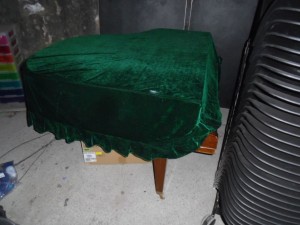
I was vaguely wondering how they had got it down there until I reminded myself that they had got hundreds of tons of tunnelling equipment down so a baby grand shouldn’t present too much difficulty. I must admit I’d love to play here as the acoustics must be wild.
I had a bit of a look at the very well-stocked book / souvenir shop and could easily have spent a few £££ but I didn’t as I didn’t even have my daysac with me and didn’t fancy lugging a shopping bag around all day. By now it was 1415 but I was not in the slightest worried that I hadn’t even started my day’s Jubilee Greenway walking as it was never intended to be a route march and I had really enjoyed the Engine House. If I only got a bit of the walk done that day then so be it.
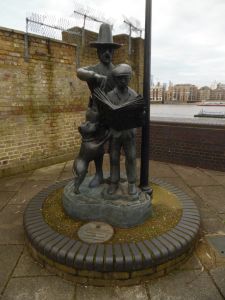
I hadn’t walked more than 100 yards along Rotherhithe street when I was in the rather small but tidy Cumberland Wharf Park, named for a previous landing stage here which is believed to have been the exact spot the Mayflower set sail from. It will be the Quadricentennial in July 2020 which would ordinarily have prompted plenty of visiting Americans I am sure but no doubt the current coronavirus pandemic will put paid to that which is a shame. What it did prompt, in 1991, was the unveiling of this rather fetching statue by local artist Peter McLean.
Officially called Sunshine Weekly and the Pilgrim’s Pocket, it appears to show one of the Pilgrim Father’s looking over the shoulder of a 1930’s urchin reading the Sunshine Weekly, which was a real magazine. A small dog clamours for attention by jumping up on the boy’s legs. I must admit that I couldn’t make head nor tail of it all when I was there save the Puritan reference and had to look it up when I got home. Mr. McLean has been extremely clever and the whole beauty of the piece lies in the small details.
Certainly the adult male is a Pilgrim Father, possibly one William Bradford and the reference to his pocket should prompt you to have a look there. It contains a crucifix, a lobster claw common to the area where they landed and a fictional 1620 version of an A-Z guide book. He looks over the shoulder of the boy who is reading the comic which is rendered here as the “Sunshine Weakly” and it is full of detail notably an account of the Mayflower Voyage but also more modern icons like the Empire State building. What the significance of the hammer head, cut-throat razor, pair of pliers etc. lying at the boy’s feet represent I have no idea. I am sure it is all very symbolic but then again it may just be total whimsy on the part of the sculptor.
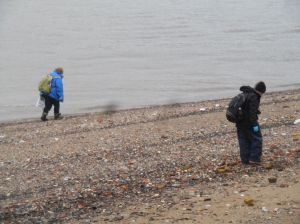 Leaving Father Bradford, the boy and the mutt to their own devices I carried on West and soon caught sight of another pair of mudlarkers down on the foreshore. If you have happened upon this entry other than via the previous one then please go back a page and you’ll get a full explanation of what mudlarkers are.
Leaving Father Bradford, the boy and the mutt to their own devices I carried on West and soon caught sight of another pair of mudlarkers down on the foreshore. If you have happened upon this entry other than via the previous one then please go back a page and you’ll get a full explanation of what mudlarkers are.
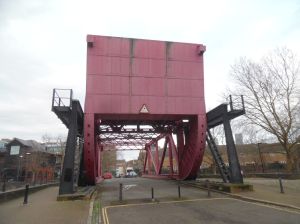 Shortly after the mudlarkers I caught sight of something that made me smile, this bascule bridge, a remnant of the days of the London Docks, in this case the Surrey Water Dock which led on down to the Canada Water Dock. Why it made me smile was that it is to exactly the same design as one in Wapping very close to where I used to live.
Shortly after the mudlarkers I caught sight of something that made me smile, this bascule bridge, a remnant of the days of the London Docks, in this case the Surrey Water Dock which led on down to the Canada Water Dock. Why it made me smile was that it is to exactly the same design as one in Wapping very close to where I used to live.
It looks like a triumph of Victorian engineering and it is to an extent although this bridge was not installed until well into the 20th century. It is an example of a Scherzer rolling lift bridge, the patent for which was registered in 1893 by William Donald Scherzer of Chicago. It just goes to show how efficient they were that they were still being erected as late as 1949. The counterweight at the top of the structure is filled with water and the whole apparatus is so delicately balanced that it needs a minimum of energy to operate. The fact that the bridge is now closed to vehicular traffic is an attempt to stop the now residential street becoming a rat run rather than an indication of any structural weakness. If you want to have a look at an old Pathé monochrome newsreel of the bridge in operation then here it is.
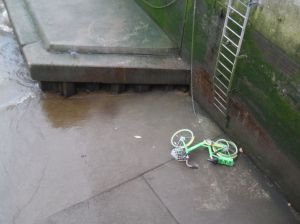 Crossing the bridge I looked down towards the water line to see one of the various pay per ride electric bikes which some of the local oiks had obviously thought it amusing to heave into the drink.
Crossing the bridge I looked down towards the water line to see one of the various pay per ride electric bikes which some of the local oiks had obviously thought it amusing to heave into the drink.
As I was looking at this I heard sirens which isn’t as strange as it may sound. The police have numerous craft on the river and I believe the fire brigade also have a few boats. I looked to see what emergency was happening and, as best I could make out, the emergency was that the RIB (inflatable) had broken down and ended up being towed by one of the launches. Luckily the police boatyard is just across the river in Wapping so they didn’t have far to go.
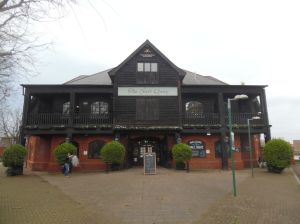 The next thing I spied with my little eye was something beginning with P, that’s right, a pub. This is the Old Salt Quay and that is a lie as it was built in 2003. It trades on the name of the Salt Quay which was historically just the other side of that lovely bascule bridge we recently encountered. It is owned by Greene King which, as I reported what seems a very long time go on my trip to Northumberland, had been bought over couple of months previously by the richest family in Hong Kong. Perhaps the days of the lascars coming ashore in London docks aren’t quite over after all. I don’t remember seeing it before but it is a very very long time since I was down this way despite it’s relative proximity to my home.
The next thing I spied with my little eye was something beginning with P, that’s right, a pub. This is the Old Salt Quay and that is a lie as it was built in 2003. It trades on the name of the Salt Quay which was historically just the other side of that lovely bascule bridge we recently encountered. It is owned by Greene King which, as I reported what seems a very long time go on my trip to Northumberland, had been bought over couple of months previously by the richest family in Hong Kong. Perhaps the days of the lascars coming ashore in London docks aren’t quite over after all. I don’t remember seeing it before but it is a very very long time since I was down this way despite it’s relative proximity to my home.
I steeled myself to keep walking as I had still only covered about half mile distance. I had walked further to get to the Tube station to start the walk than I had actually walked! As I walked round the bend in the river I looked over to the North bank and the entrance to Limehouse Basin with the Gordon Ramsay restaurant where this whole little adventure had started if you can remember back that far. It was only 12 days previously and didn’t really seem a great period of time when I was walking but it does rather more now, presumably because of the length of time it has taken me to write the whole thing up.
I soon came to the delightfully named Lavender Pond local nature reserve which I found rather pleasing. It is on the sire of one of three such ponds in the area where timbers were floated to stop them drying and cracking. There is a pumphouse here which from 1997 until recently was a local history museum and educational resource but the volunteers must have lost interest as that facility has now closed.
The website of the London Parks and Gardens Trust which we met in the last entry (remember the Duck Keeper’s House in St. James’s Park?) describes the whole site as “rather neglected”. I didn’t find it so, I thought that it was being deliberately left to grow out but what do I know? I’ll post the images and let you decide for yourself.

At this stage of the walk I was opposite the Isle of Dogs with Canary Wharf and all the rest of the high rises and I did go on a bit of a shutter frenzy so I shall have to rein myself in and only post one of them here. It was whilst taking them that I glanced down and saw the stencilled message you can see in the image at what is a potential suicide spot at high tide I suppose. Easy enough to walk in here and the currents in the Thames can be fairly serious especially in the lower reaches.
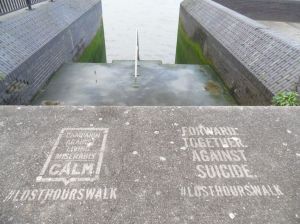 I had heard of the Campaign Against Living Miserably (CALM) mental health support charity which deals mainly with male suicide but I was surprised to learn from their website that this awful way to die is the single biggest killer of men under 45 in the UK with an apalling 18 instances every day. That shocked me. There was a hashtag for LOSTHOURSWALK which I believe is something to do with social media.
I had heard of the Campaign Against Living Miserably (CALM) mental health support charity which deals mainly with male suicide but I was surprised to learn from their website that this awful way to die is the single biggest killer of men under 45 in the UK with an apalling 18 instances every day. That shocked me. There was a hashtag for LOSTHOURSWALK which I believe is something to do with social media.
It appears that there was a walk to raise awareness of the problem starting in the “lost hour” when the clocks change from British Summer Time back to Greenwich Mean Time at the end of October. It went from Greenwich to Big Ben and then back again for the hardier walkers with others continuing to a finish point at the Oval. I am guessing now that this was to indicate the route for the walkers although you shouldn’t really get lost, even at night. Definitely a good cause although I can see a huge overlap with the work of the much longer established Samaritans but I reckon you cannot have enough support around this issue.
I have lost a few friends to suicide over the years and so I’ll do my bit here, small as it is. If you might be considering such a drastic step, get in touch with one of these organisations. Please.
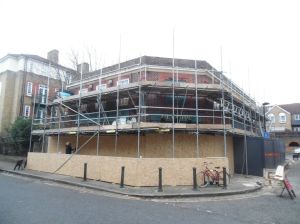 It wouldn’t be day’s walking if I didn’t come upon one of these – a “lost pub”, this one the former Clipper further along Rotherhithe Street. It looks as if the poor old Clipper has made her last voyage and the guy working on the hoarding outside told me it was being converted into flats like so many others. Like all the rest it has been reported to the Lost Pubs website.
It wouldn’t be day’s walking if I didn’t come upon one of these – a “lost pub”, this one the former Clipper further along Rotherhithe Street. It looks as if the poor old Clipper has made her last voyage and the guy working on the hoarding outside told me it was being converted into flats like so many others. Like all the rest it has been reported to the Lost Pubs website.
 Not far from what was the Clipper I had to take an image of this funky little ice cream van which says rather a lot about the gentrification of this part of London and so many others.
Not far from what was the Clipper I had to take an image of this funky little ice cream van which says rather a lot about the gentrification of this part of London and so many others.
Look closely and you’ll see it is not an ice cream van but a gelato van and in addition to the traditional Italian delicacy they offer a vegan gelato. How you make gelato without dairy products is a mystery to me and one I am not particularly anxious to solve as the whole concept seems ludicrous. It ranks up there with the “vegan bacon” I had seen advertised as part of a non-meat breakfast in Broadstairs a couple of months before.
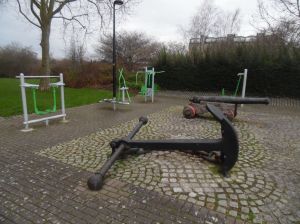 A bit further along the river I discovered a little exercise park which was a lovely mixture of the old and the new with an apparently original anchor in amongst the pieces of equipment. have to say that if you were of mind to work out a bit, the view here as you do so is second to none.
A bit further along the river I discovered a little exercise park which was a lovely mixture of the old and the new with an apparently original anchor in amongst the pieces of equipment. have to say that if you were of mind to work out a bit, the view here as you do so is second to none.
 I have mentioned a few times on this walk that the Thames is still very much a working river and it is true even if the docks have all moved downsteam to Tilbury and the East coast ports. Not half a mile from where I had seen the police vessels I saw Royal Navy vessel which I have looked up and discovered to be HMS Ranger, a 68 foot Archer class patrol vessel based at Portsmouth and with close links to Sussex University URNU, so now you know.
I have mentioned a few times on this walk that the Thames is still very much a working river and it is true even if the docks have all moved downsteam to Tilbury and the East coast ports. Not half a mile from where I had seen the police vessels I saw Royal Navy vessel which I have looked up and discovered to be HMS Ranger, a 68 foot Archer class patrol vessel based at Portsmouth and with close links to Sussex University URNU, so now you know.
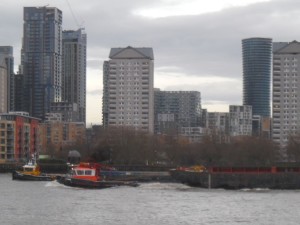 Exactly four minutes later I saw two working tugs towing empty rubbish barges back upstream, presumably having dumped at one of the landfill sites further down. The “Old Father” as Londoners sometimes refer to the river is constantly busy and to just sit and watch the traffic on it for a while is always most rewarding, especially from somewhere like the riverside garden of the Town of Ramsgate in Wapping.
Exactly four minutes later I saw two working tugs towing empty rubbish barges back upstream, presumably having dumped at one of the landfill sites further down. The “Old Father” as Londoners sometimes refer to the river is constantly busy and to just sit and watch the traffic on it for a while is always most rewarding, especially from somewhere like the riverside garden of the Town of Ramsgate in Wapping.
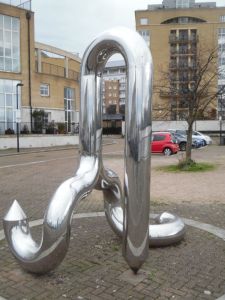 Just beside Greenland Dock I discovered the sculpture you can see here which is called Curlicue and is the work of sculptor William Pye. It appears that he is very famous and is responsible for major works from Azerbaijan to Brazil via New Mexico and Gatwick Airport. Needless to say, I had never heard of him. It is just another piece of modern art that doesn’t mean anything to me but at least it has the advantage of not being too offensive on the eye which is more than can be said for some of the obscenities and idiocies further downstream as you shall see in due course.
Just beside Greenland Dock I discovered the sculpture you can see here which is called Curlicue and is the work of sculptor William Pye. It appears that he is very famous and is responsible for major works from Azerbaijan to Brazil via New Mexico and Gatwick Airport. Needless to say, I had never heard of him. It is just another piece of modern art that doesn’t mean anything to me but at least it has the advantage of not being too offensive on the eye which is more than can be said for some of the obscenities and idiocies further downstream as you shall see in due course.
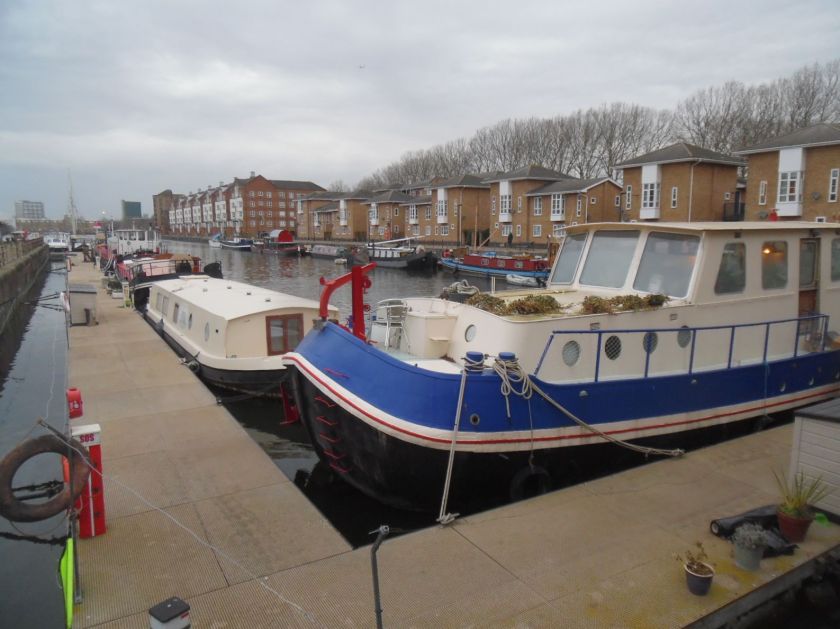 Greenland Dock itself appears to be primarily residential now with a selection of very tasty wide-beam barge and tug conversions, all of which looked very homely. I really would love to live on a boat.
Greenland Dock itself appears to be primarily residential now with a selection of very tasty wide-beam barge and tug conversions, all of which looked very homely. I really would love to live on a boat.
The dock is of interest in that it is the oldest wet dock on the river, darting back to 1695 when it was constructed to berth ships of the East India Company. In those days it was so rural here that they had to plant trees to act as a windbreak which is a little hard to believe now. It was originally called the Howland Great Wet Dock for local landowner John Howland but it gained it’s current name from about the 1720’s on to mark it’s use as a base for the Greenland whalers. I must confess that I had always associated the whaling industry with ports further North and didn’t know there was a London fleet but the dock here supported a number of blubber boiling houses. I dread to think what they must have smelled like.
The whaling trade declined in the early 19th century and was replaced by timber trading, particularly importing from the Baltic, and the dock reached it’s heyday on the late 19th and early 20th century, especially with the berthing of transatlantic liners bound for Canada (hence the nearby Canada Water area). The entire area was all but destroyed by the Germans in the Blitz and the docks never really recovered. The whole complex limped on in the post-war period but finally closed in 1970 and was sold to the local Council whereupon it lay derelict for many years until the whole Docklands redevelopment got underway in the 1980’s. All the old warehouses were turned into luxury flats like anywhere else within hailing distance of the river and I do wonder what the old dockers would have made of it. Actually I know as I have spoken to one or two of them over the years and their thoughts are interesting if unprintable here!
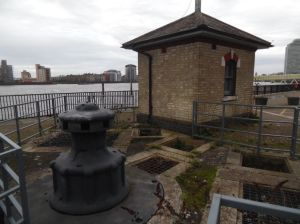 At the entrance to the Greenland is an interesting piece of industrial archaeology if you are into such things as I am. It looks a bit sorry for itself now but this was a hydraulic capstan which was operated, as the name suggests, by high pressure water and would wind hawsers to assist large vessels into and out of the Dock.
At the entrance to the Greenland is an interesting piece of industrial archaeology if you are into such things as I am. It looks a bit sorry for itself now but this was a hydraulic capstan which was operated, as the name suggests, by high pressure water and would wind hawsers to assist large vessels into and out of the Dock.
It was about this point that disaster struck yet again. In a complete re-run of the last day’s walking, I had been going along nicely and all of a sudden my knees started playing up. I know it came on me as suddenly as I have described it as I had been very conscious of them all day after the previous mishap. I was more than a little annoyed but I knew it was pointless to try to force the issue as I would only have made matters worse. It was hugely frustrating as I had hardly done any mileage and everything else that might have potentially given me problems was holding up fine. If this nonsense kept up then I may as well give up walking as exercise and buy a bloody mobility scooter!
As with the previous time I had been forced to curtail a day’s walking it was no great problem getting home as I knew I was close to Surrey Quays Overground station. I actually have to discipline myself to call it that as to me it will always be Surrey Docks which it was until 1989 when it was renamed after a newly opened shopping centre, would you believe? All that history wiped out in the interests of the gentrification of Docklands. I suppose if this had been America it would have been renamed Walmart Quays.
It was a quick journey home again to nurse the aching knees and wonder how long it would take them this time until they would be fit for a bit more walking. I was going to finish this walk if it killed me and that is what was looking likely at this point.
In the next instalment I meet a Tsar, see a slice of a ship, walk under water and get back on the “right” side of the river so stay tuned and spread the word.
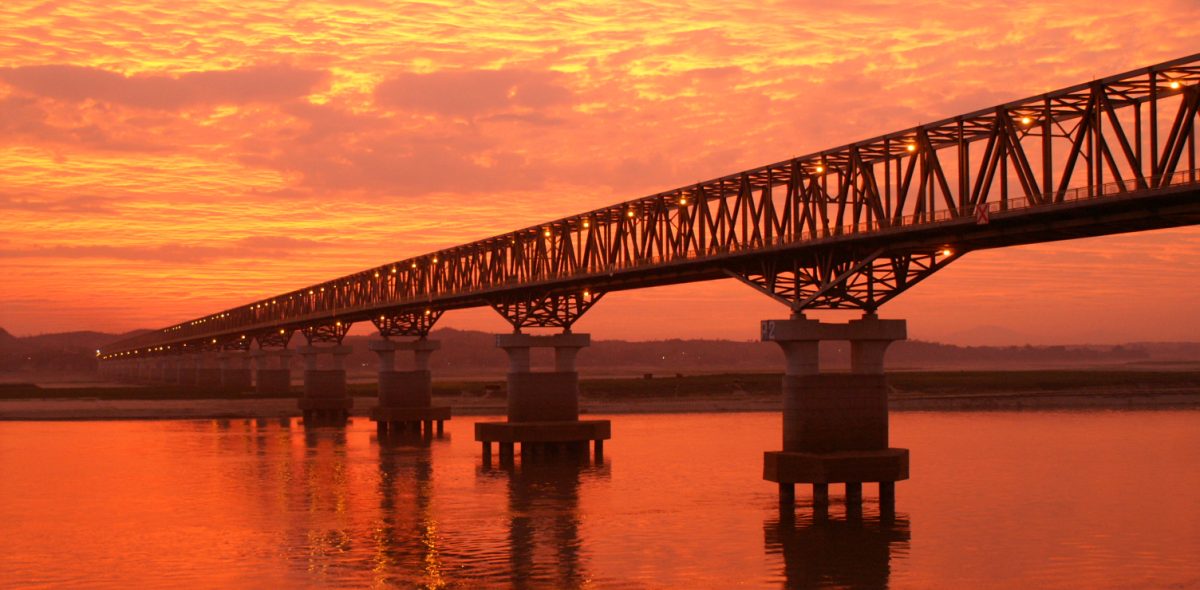















Wonderful to read about a rambling walk inside a city at a time when such impulses have to be sublimated
LikeLike
Hello there,
I am so sorry about taking so long to answer this but somehow I missed all your comments on my dashboard. Thank you so much for taking the time to read my posts and comment on them, it is much appreciated.
Yes, this quarantine nonsense is certainly putting a stop to my long walks and annoyingly it means I cannot finish up the path to write about it but I am using my time at home to write up an even bigger walk round London I did a few years ago called the London LOOP. If you care to have a look, it begins here.
https://fergysrambles.org/2013/05/10/london-loop-1/
LikeLiked by 1 person
I was going to have cancel Newcastle anyway, but I bet you’re gutted. There’s always next year though. Stay safe
LikeLike
I’m a bit annoyed for sure. As you know from the blog I have great friends up there and I was going to try to squeeze a few gigs in either before or after but this all looks like the new reality.
Thankfully it doesn’t bother me too much regarding work etc. (I don’t as you know) but it is a pain about the Euromeet. I know Sarah had her heart set on it as she lost out to John and Plovdiv last year so I feel sorry for her.
As you rightly say, there is always next year when it will all hopefully have blown over.
LikeLike
I am so sorry to hear that Malc, I do hope it gets sorted out soon and I suppose you have had more than enough of being “confined to barracks” without this latest nonsense. I had to pop to the shop this evening and the place was like a ghost town on a Saturday evening, it was very strange.
LikeLiked by 1 person
It’s a good thing we don’t have debtor’s prisons any more.
Your description of 19th century tunnel building puts things in perspective. Perhaps we shouldn’t get so upset when some of our 21st century construction projects have huge cost overruns and are decades behind schedule.
LikeLiked by 1 person
I agree, Don.
I am never done cursing that awful Crossrail that has just been put back yet again.
LikeLiked by 1 person